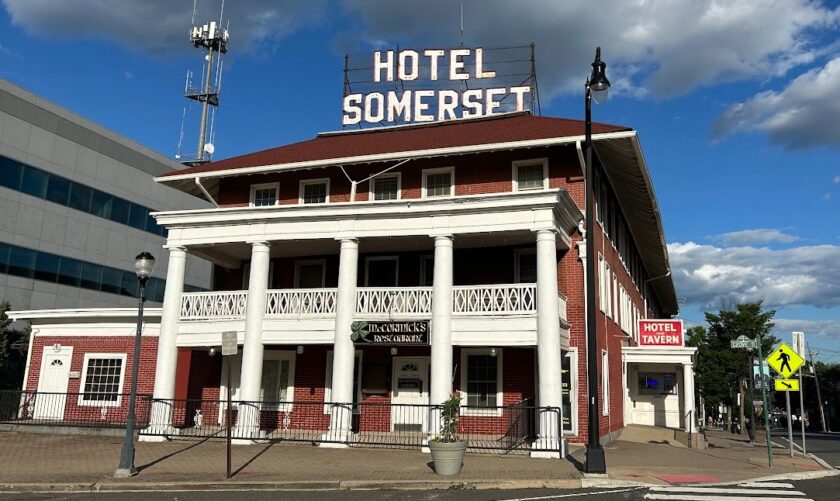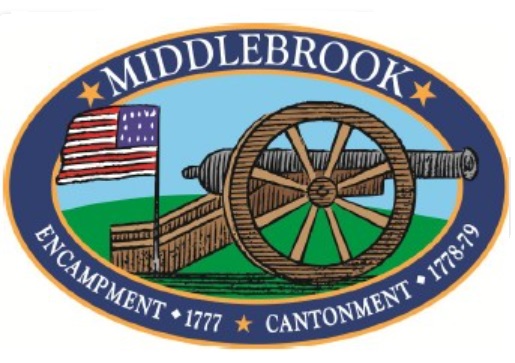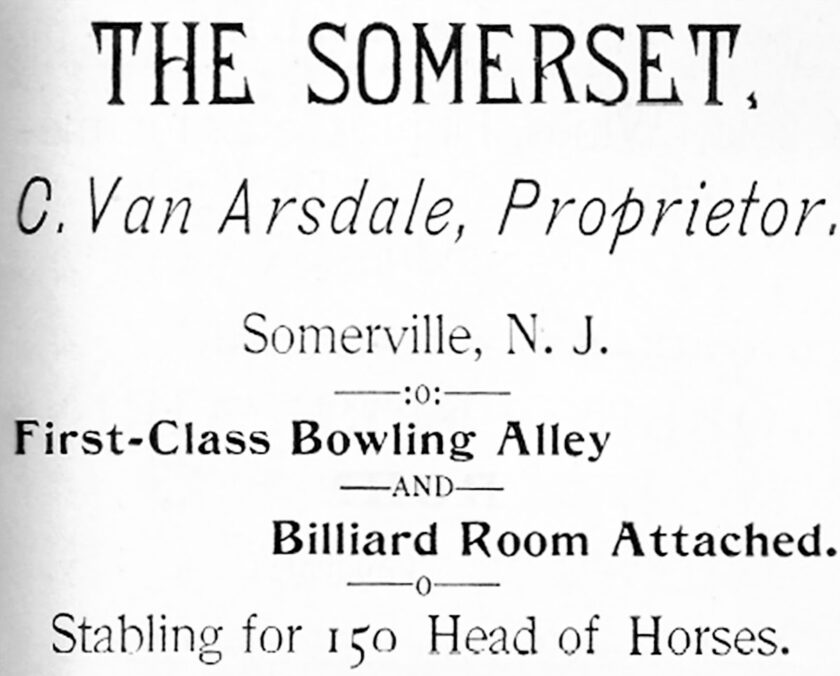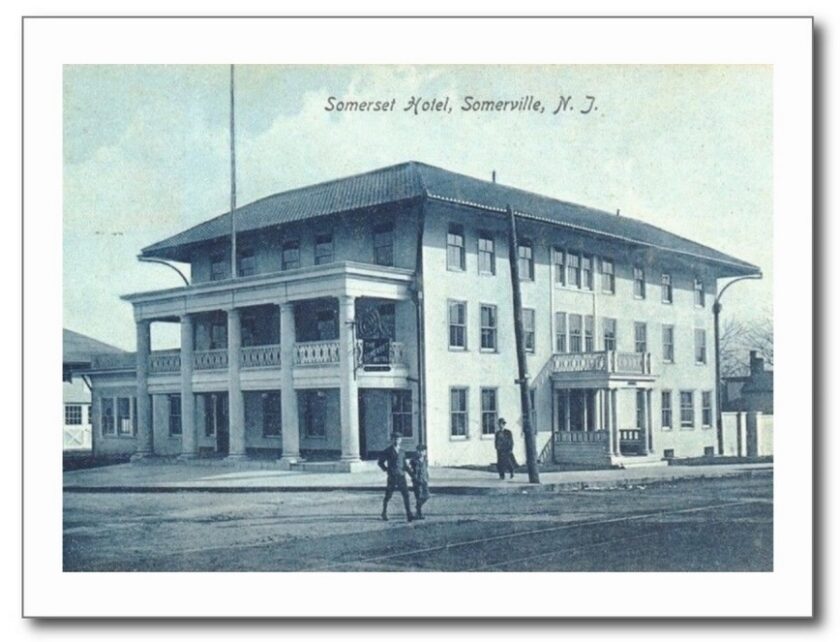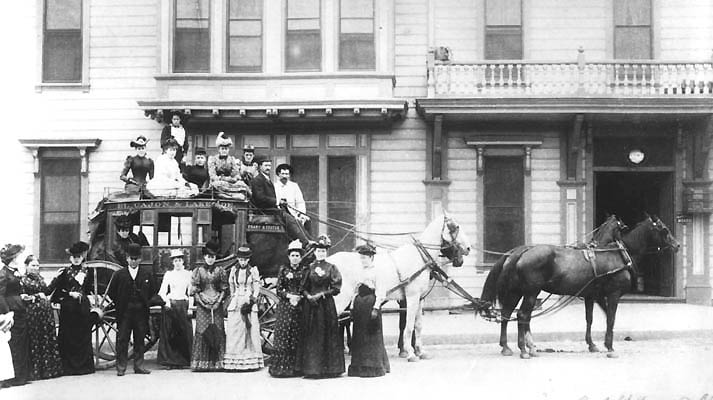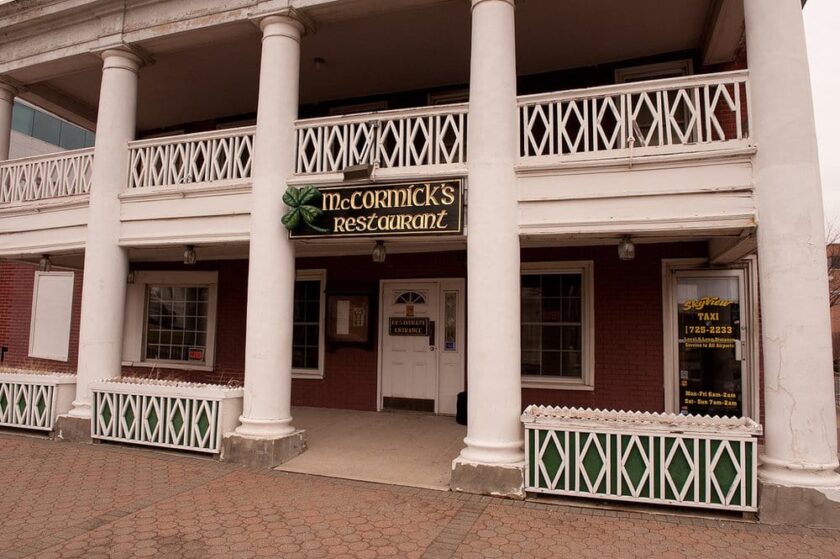I walked by this place for years and never thought it was open, until one day I saw the lights on. I decided to investigate. Here’s the deal: that business is the oldest in Somerville, New Jersey, a tavern that served Washington soldiers during the Revolutionary War.
The oldest continuously operated tavern/Inn in the United States.
Rumor has it that Washington and Cornelius Tunison split a bottle of claret there.
The Hotel Somerset traces its roots back to the colonial era, when Cornelius Tunison built it before the founding of Somerville and was initially known as Tunison’s Tavern.
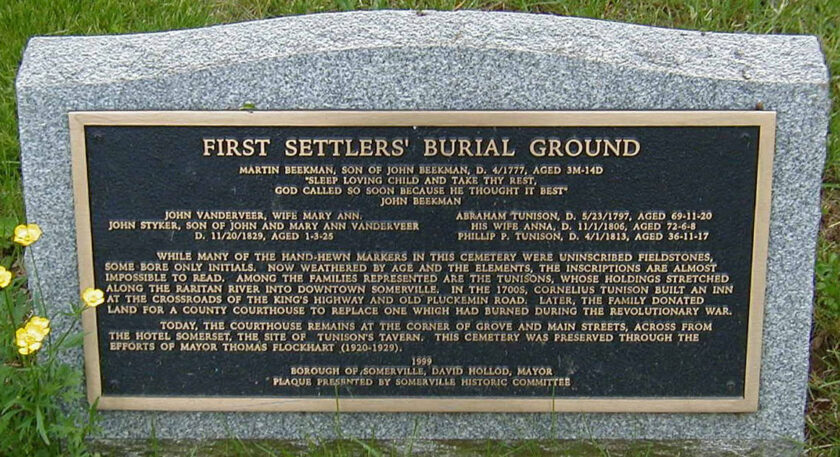
The tavern was named after Cornelius Tunison Sr. (circa 1728–1793), a local innkeeper and early settler in Somerset County. He operated the tavern in what was then part of Bridgewater Township/Raritan, which later became Somerville. The establishment stood at the corner of Grove and Main Streets, a location that eventually became the site of the Somerset Hotel.
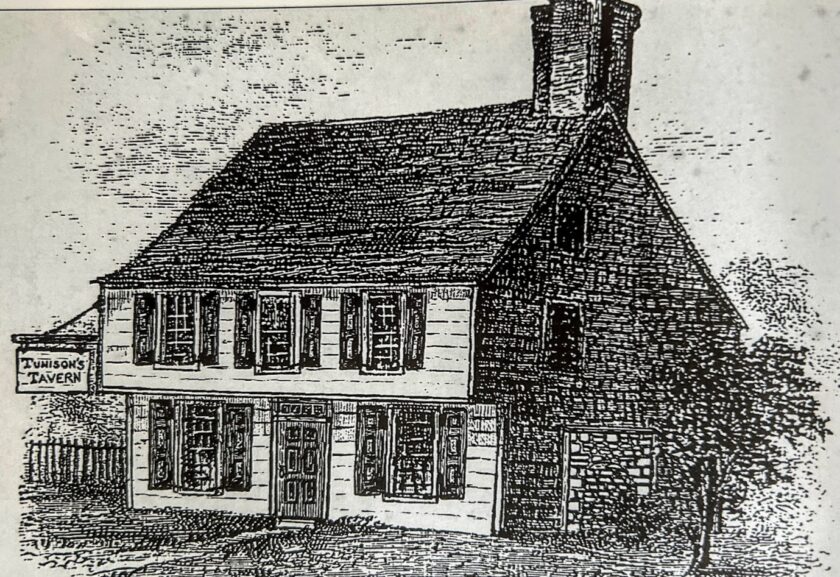
While some state the first Tunison home was built around 1764, we know there are records from 1769 when the house became the place for town meetings, On April 10, 1781 a meeting of Freeholders and justices met at what was then called Raritan, to raise money to build a jail that was eventually constructed just to the east on the site. Main Street was then called “Great Raritan River Road.” The original structure was only two stories.
Revolutionary War Ties
During the brutal winter of 1778–79, as Washington’s troops were stationed nearby at Middlebrook, Tunison’s Tavern served as a vital refuge. Located close to General George Washington’s headquarters at the Wallace House, the tavern offered soldiers a warm place to rest and find nourishment during one of the most challenging periods of the war.
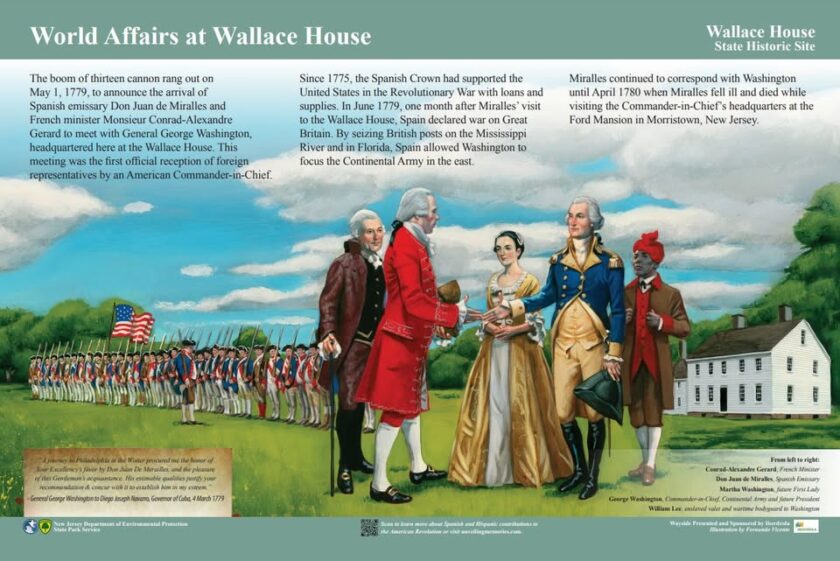
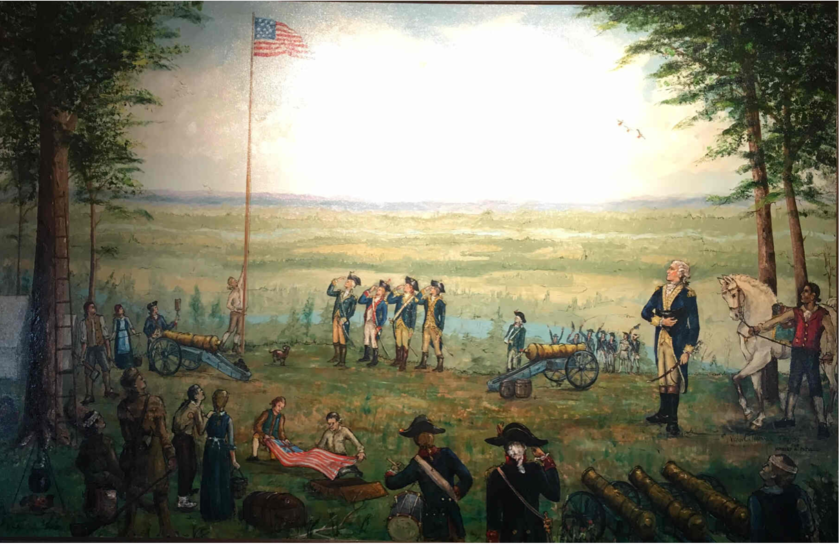
Above: The Approximate path from the 1778/1779 journey from the Middlebrook Encampment, on the Watchung Mountain hillside in Bridgewater to Tunison’s Tavern was just around a 5-mile hike each way.
Soldiers would have found comfort and camaraderie over a range of popular drinks of the era. Hard cider was the most common beverage, made from the abundant apple harvests in the colonies. Beer and English-style ales were also widely consumed, often brewed locally and relatively low in alcohol. Rum, imported from the West Indies, was the most favored distilled spirit and frequently used in mixed drinks like punch and grog. Brandy made from apples or peaches, as well as increasingly popular frontier whiskey, were also available. Warm concoctions like “flip”—a mix of beer, rum, and molasses heated with a red-hot poker—were standard in colder months.
Non-alcoholic options most likely included switchel, a tangy blend of vinegar, molasses, and ginger, and small beer, a low-alcohol brew suitable for daily consumption. These beverages provided not only physical warmth and nourishment but also a vital morale boost and sense of routine for troops enduring the harsh winter of the Revolutionary War.
19th and 20th Century Growth
In the 19th and 20th centuries, Tunison’s Tavern operated under various names, including Frittz’s Hotel, Somerset House, Hotel Somerset, and the Somerset Hotel.
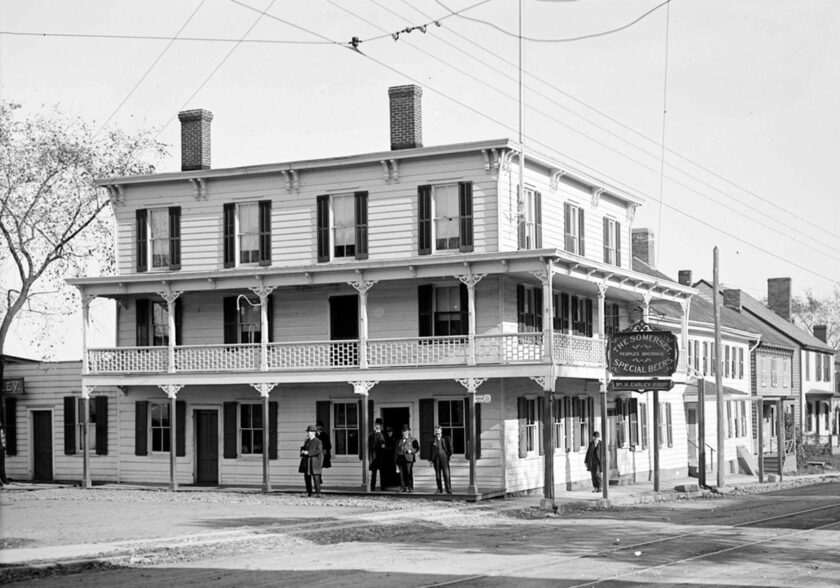
Tavern / Hotel Somerset Owners
The tavern would be sold from Tunison to Alexander McCalla of Philadelphia, who later sold it to John Tolbert on May 1, 1823. The executors of Tolbert’s estate sold it to Jacob Frittz in 1847, and it became Frittz’s (Fitts’) Hotel. The Somerset Hotel, re-constructed in 1907, replaced Tunison’s Tavern. Other proprietors included Chris Van Arsdale, Charles J. Fury, Col. W.H. Early, George Schenck, J.J. Bridgman (1916), L.I. Brophy (1921), E. Harold Levy (1924), Samuel Klompus (1935), and Kenneth J. McCormick (1941-Present).
In 1906, the entire building was relocated 100 feet closer to Main Street and covered in stucco to complement the planned remodeling of the Somerset County Courthouse and the downtown area, which was completed in 1909. Remarkably, the hotel never closed its doors during the move, which took place overnight to maintain uninterrupted service.
In 1921, Brophy would refer to the reimagined tavern as a “Coffee House,” as the hotel rooms were updated and the tavern began serving meals from early morning through late night. Remember, the 18th Amendment to the U.S. Constitution, ratified in 1919, banned the manufacture, sale, and transportation of alcoholic beverages. Prohibition was repealed by the 21st Amendment in 1933, the only constitutional amendment ever passed to repeal another amendment. While the original establishment, built in 1748, was replaced in 1907 by the Somerset Hotel, a Spanish-style building designed by architect F.H. Dodge, during Prohibition, the site functioned as a hotel rather than a tavern. Prohibition was likely the reason for shifting the business focus away from alcohol and towards hospitality, with amenities and activities.
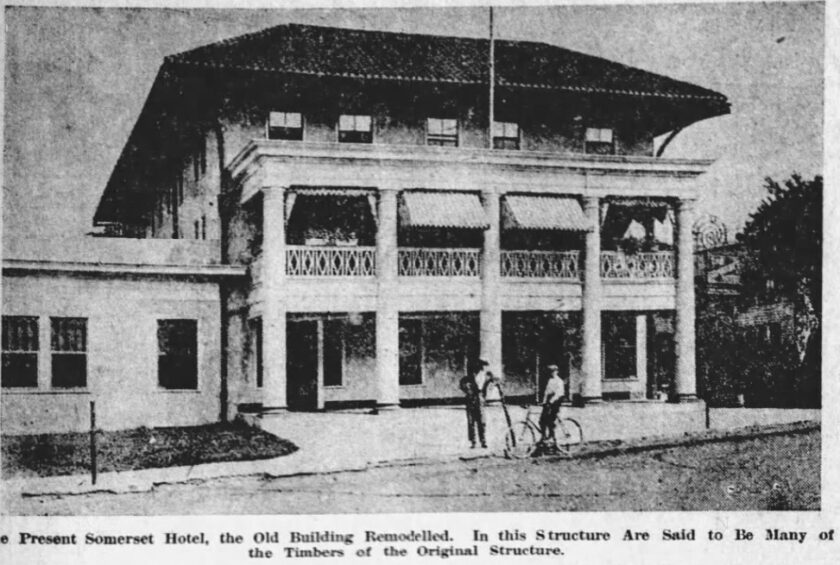
In 1927, E. Harold Levy’s hotel expansion paved the way for two new stories, twenty new rooms, a dining room capable of accommodating up to 250 guests, and 24-hour on-site service. The work would start immediately, and the cost estimates were $33,000 to create one of the finest hotels outside Newark. The Ballroom was elevated from one story to a three-story ceiling, which also added 20 additional single and double rooms with baths to the current 20, now totaling 40. Levy also introduced a new Spanish-style exterior. Levy also added a porch, a reading room, a smoking room, and a grill room, which served as a restaurant.
Central New Jersey’s Transportation Hub
The Somerset Hotel’s continuous evolution, from a colonial tavern to a stagecoach stop, and later to a railroad hotel and bus terminal, reflects Somerville’s long-standing importance as a transportation hub in central New Jersey. Tunison’s was indeed a stagecoach stop in the 18th and 19th centuries. The tavern was strategically located along the Old York Road, a major colonial route connecting Philadelphia and New York City. It aligned closely with Main Street, running through the town center, right past the Tunison’s Tavern/Hotel Somerset.
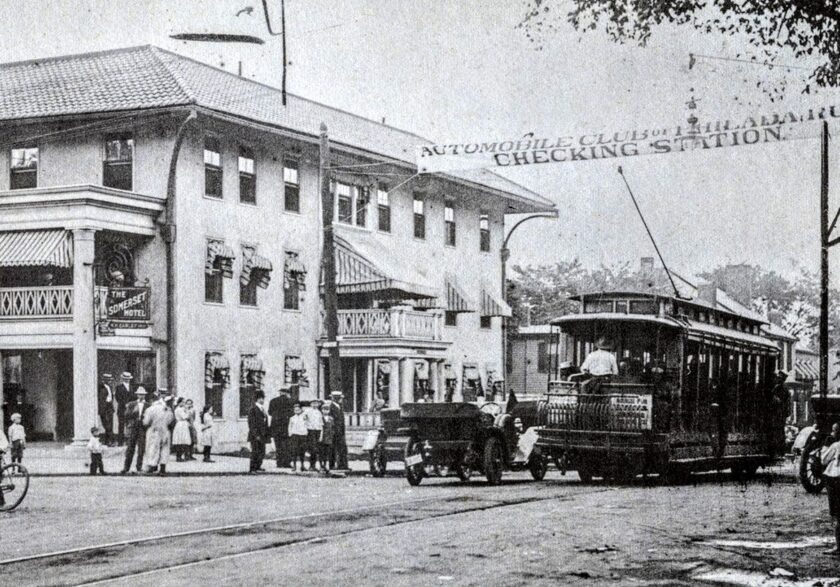
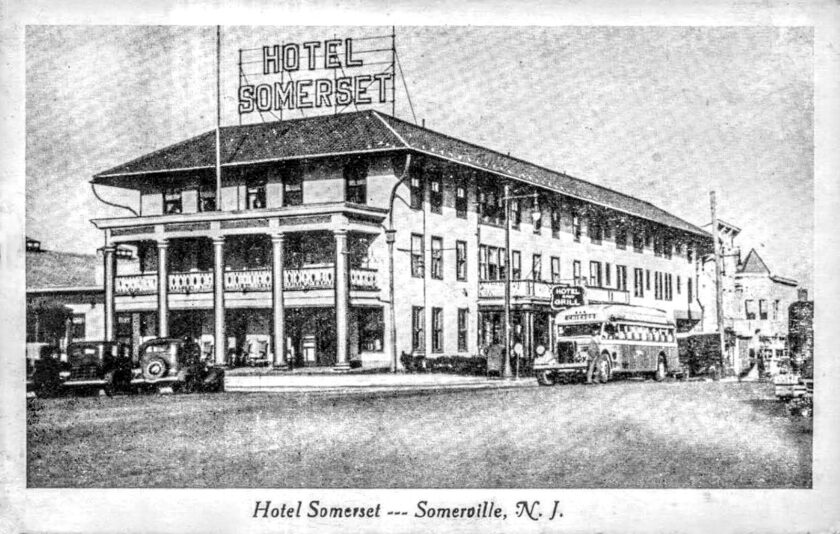
The tavern’s large stables, which reportedly accommodated over 150 horses, further supported its role as a key stagecoach hub in the region. It served as a rest stop for travelers and stagecoach drivers, offering food, drink, and overnight lodging. So, when standing on Main Street in Somerville, especially near the Somerset County Courthouse or the Hotel Somerset, you’re on or very near the original route of the historic Old York Road.
By 1930, the Hotel Somerset had officially become a bus terminal, serving 46 buses daily from four different bus lines. This made it an updated vital transit hub for travelers moving between central New Jersey towns and larger cities, such as Newark, New Brunswick, and Trenton. In addition to the traditional rooms for rent, there were amenities such as a bowling alley, billiard parlor, and, yes, a tavern. They would even sponsor a shuffleboard team.
Somerset Hotel Evolution
As the 19th century progressed, the original tavern structure was replaced by a hotel, continuing its legacy as a hub for travelers and the community. In 1907, the current building was constructed, designed by architect F.H. Dodge in a Spanish architectural style featuring sloping tile roofs and a portico. Today, this building stands as the Somerset Hotel at 65 East Main Street, marking the site of Somerville’s oldest continuous business.
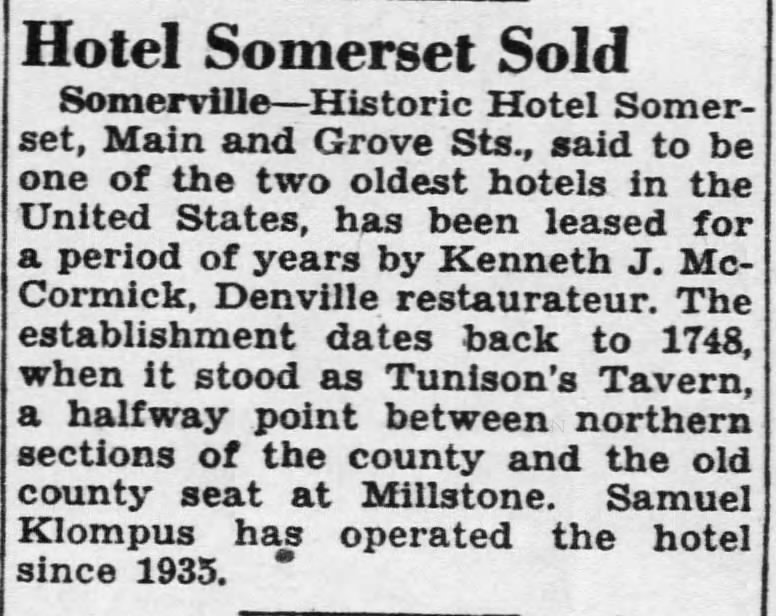
Today, this building stands as the Somerset Hotel at 65 East Main Street, marking the site of Somerville’s oldest continuous business.
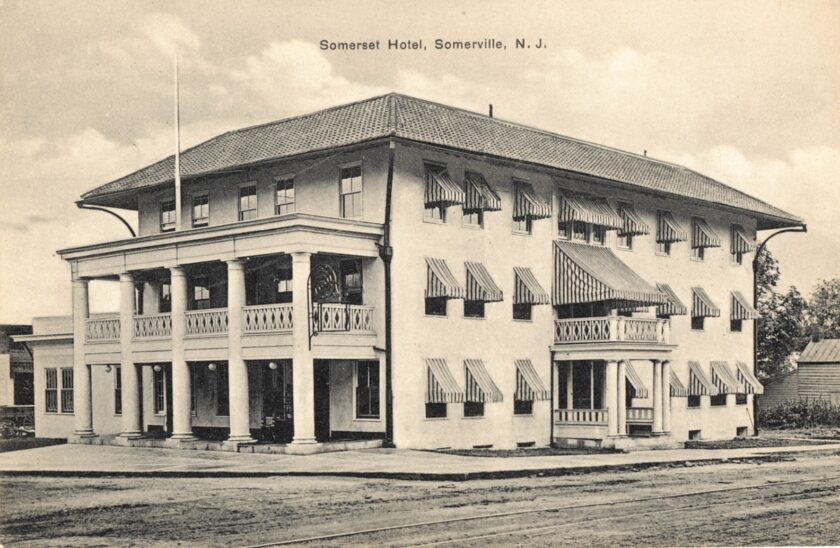
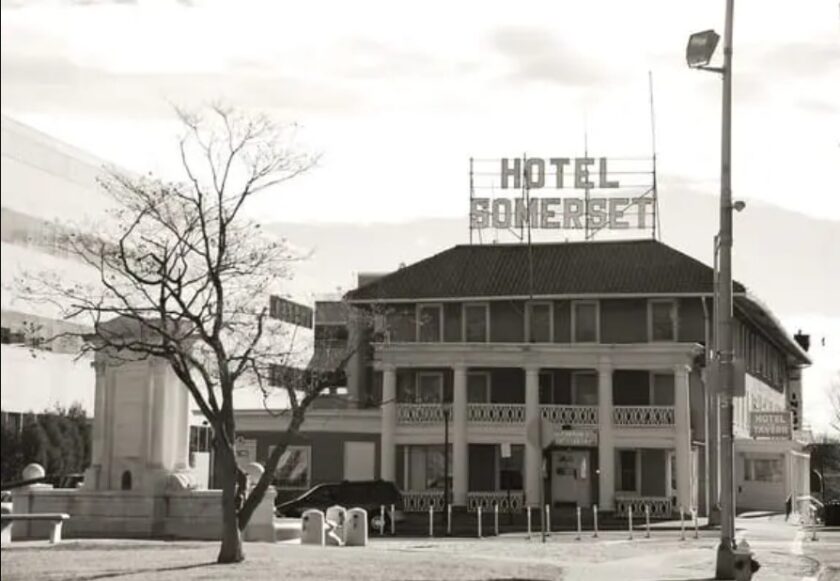

Somerville received its official name in 1925, and Main Street was about to undergo a change. Just next door at 75 Main Street, the residential houses were being moved. Houses have stood there since 1802. The house sale didn’t include a 1 1/2 acre lot known as the “tavern lot.”
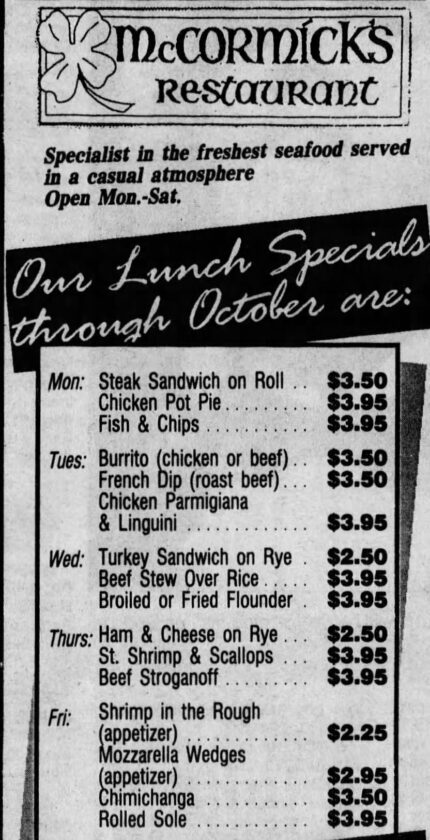

Building Plaque Praises History
“Tunison’s Tavern c.1748 was located here, making this the site of the oldest continuing business in Somerville. Some of George Washington’s troops stayed at Tunison’s during the 1778–79 Winter encampment. The tavern and the hotel that replaced it served as a stagecoach stop. Designed by architect F.H. Dodge, the current building, built in 1907, is Spanish in style, with sloping tile roofs and portico.”
Tunison’s Tavern Today – McCormick’s Pub
No disrespect, but the tavern today is a classic Jersey Dive Bar and one of the fun ones. Jukebox, pool tables, darts, a take-out fridge, and a big oval bar, perfect for stopping in for a beer and having a local conversation with the regulars.
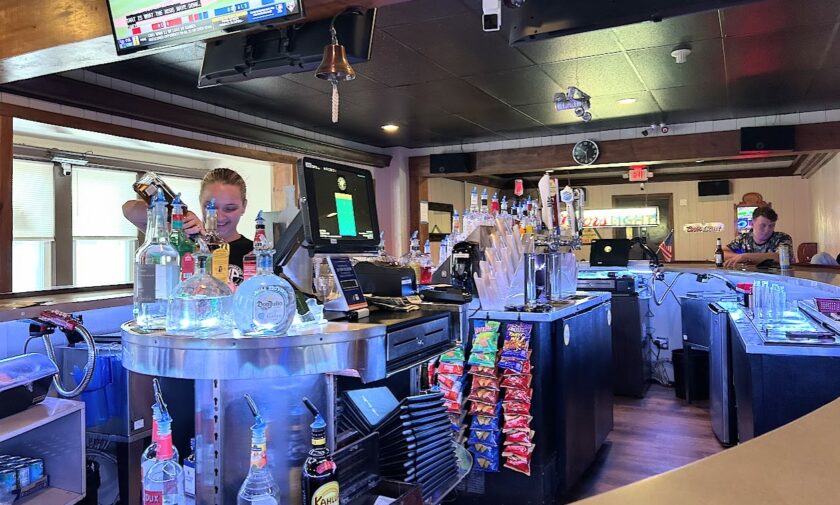
Stop in if you’re in the area. They’re still serving some great Jersey history. You can contact the Hotel Somerset/McCormick’s Pub directly at (908) 725-2737.
